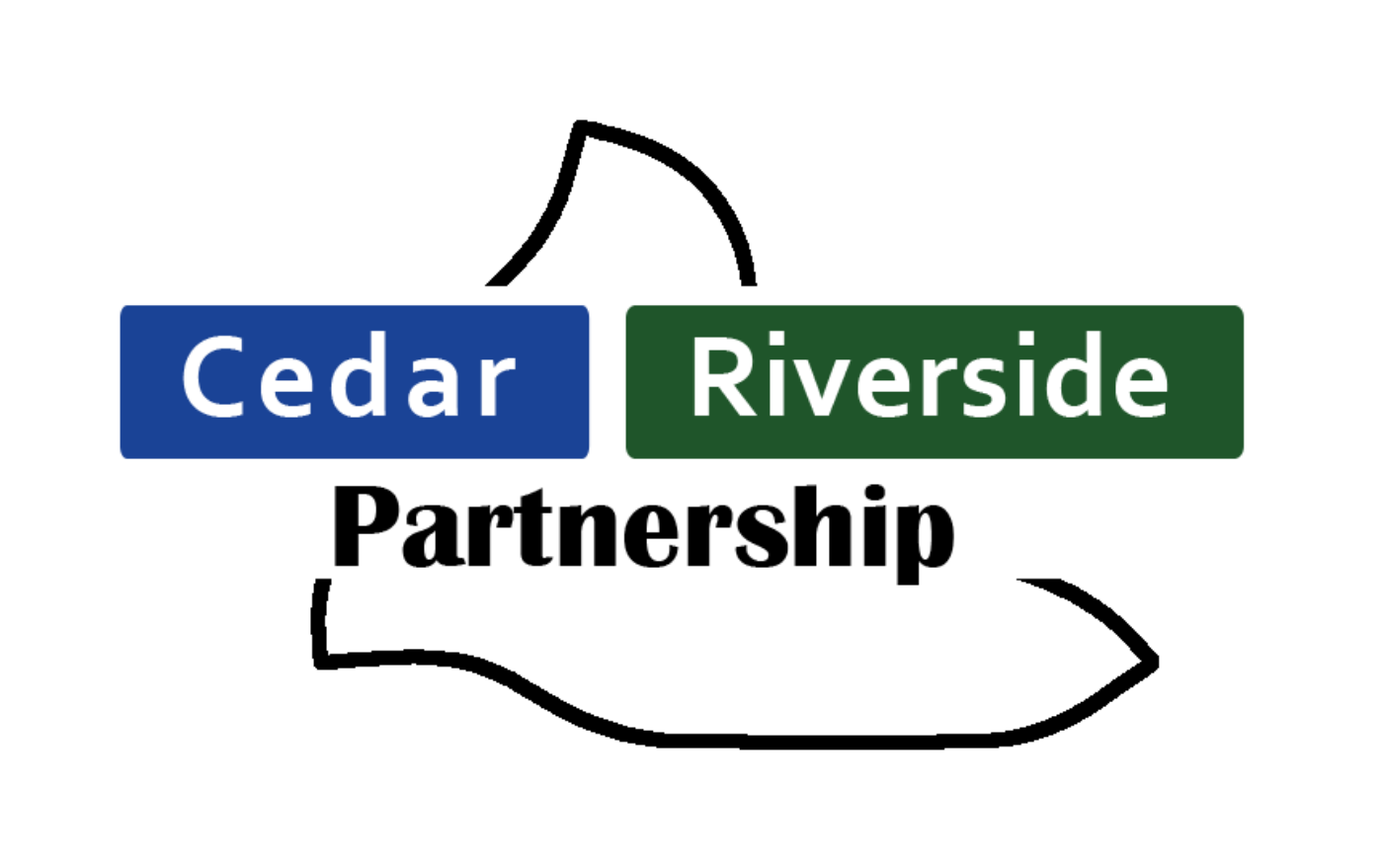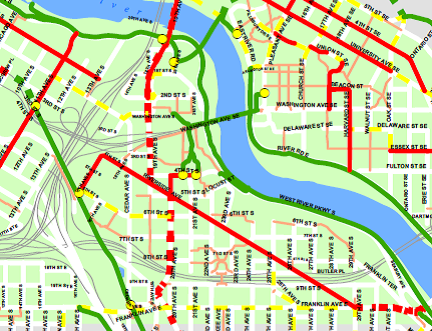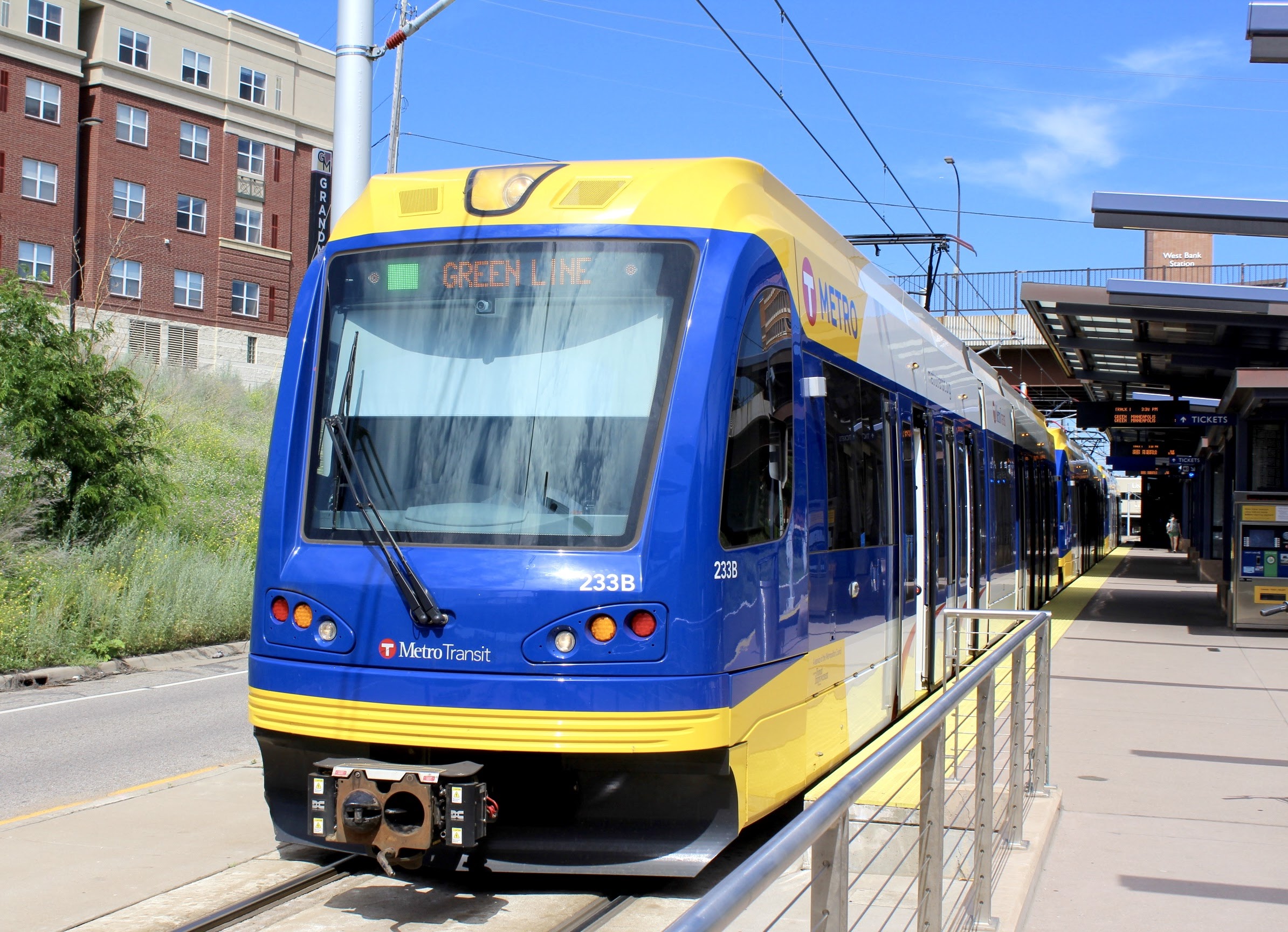Since 2009 when it wrote its Integrated Framework of Infrastructure Investments, the Partnership shared in a vision of Cedar Riverside as a key transit-oriented neighborhood.
The Partnership included the West Bank Station on its list of prioritized infrastructure projects to review and monitor. Several important factors make Cedar Riverside a great transit hub, including the area’s residents, small businesses, and large institutional employers comprised of three college campuses and a hospital.
The City of Minneapolis completed a West Bank Station Area Implementation Study in 2010 detailing the development opportunities, needed infrastructure, and public realm improvements for Cedar Riverside. This detailed vision included re-decking and cantilevering to widen sidewalks, widening sidewalks at former retraining wall on the Cedar Avenue bridgehead, establishing a high quality streetscape from Seven Corners to I-94, improving the East Bound Ramp from Cedar to Washington, the addition of public plazas, a car parking deck, a multi-purpose trail from the Hiawatha LRT trail to the West Bank UMN Campus, reconstructing 15th Avenue and 4th Streets, adding sidewalks along ramps from Washington Avenue to Cedar, and District stormwater management. These projects were based on a planning and engineering study identifying the top physically feasible improvements for the roadway and pedestrian realm, which aided funding applications for the projects and informed the community process.
The West Bank Green Line Station located between Cedar Avenue and 19th Avenue opened in summer 2014.







